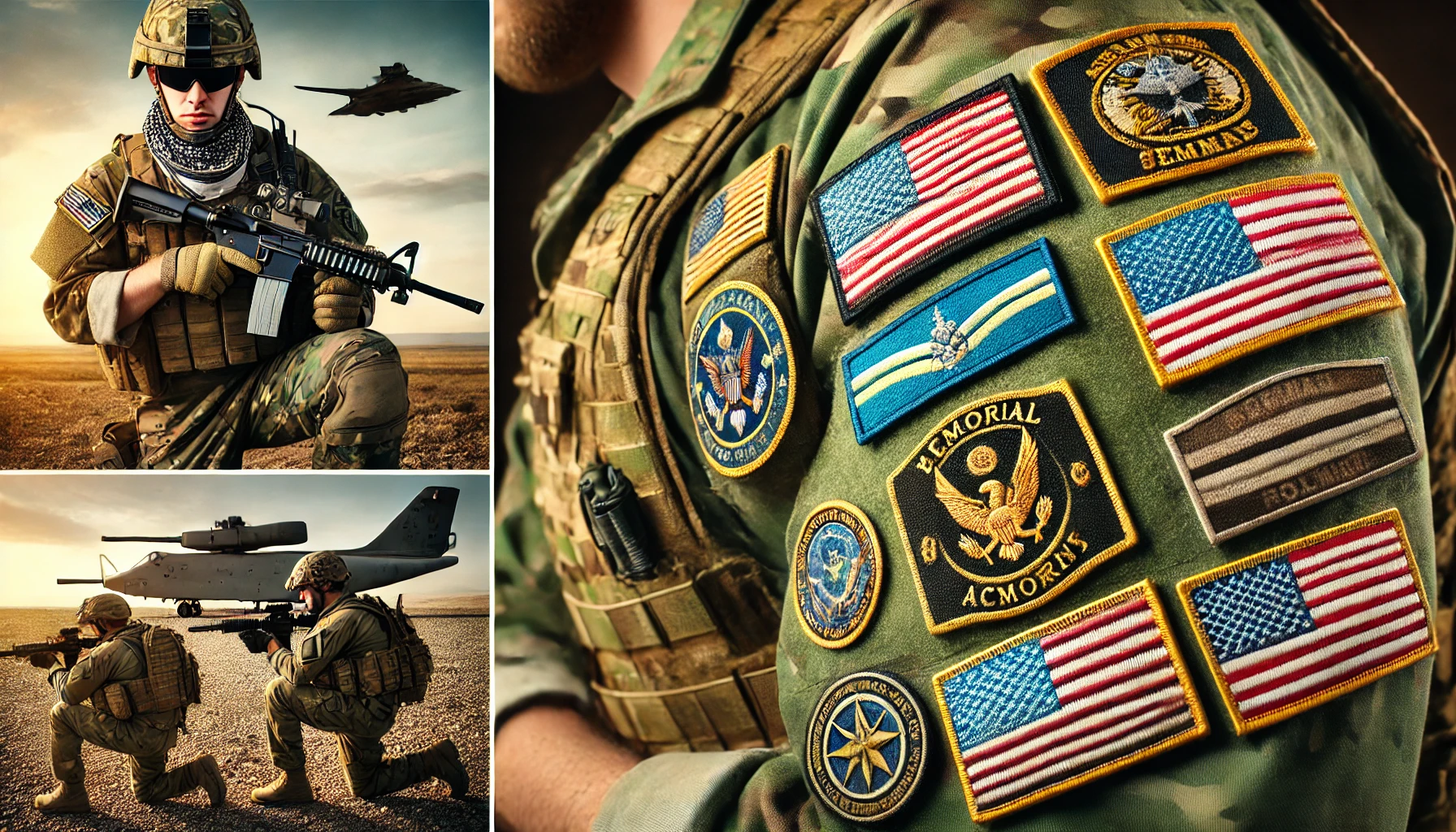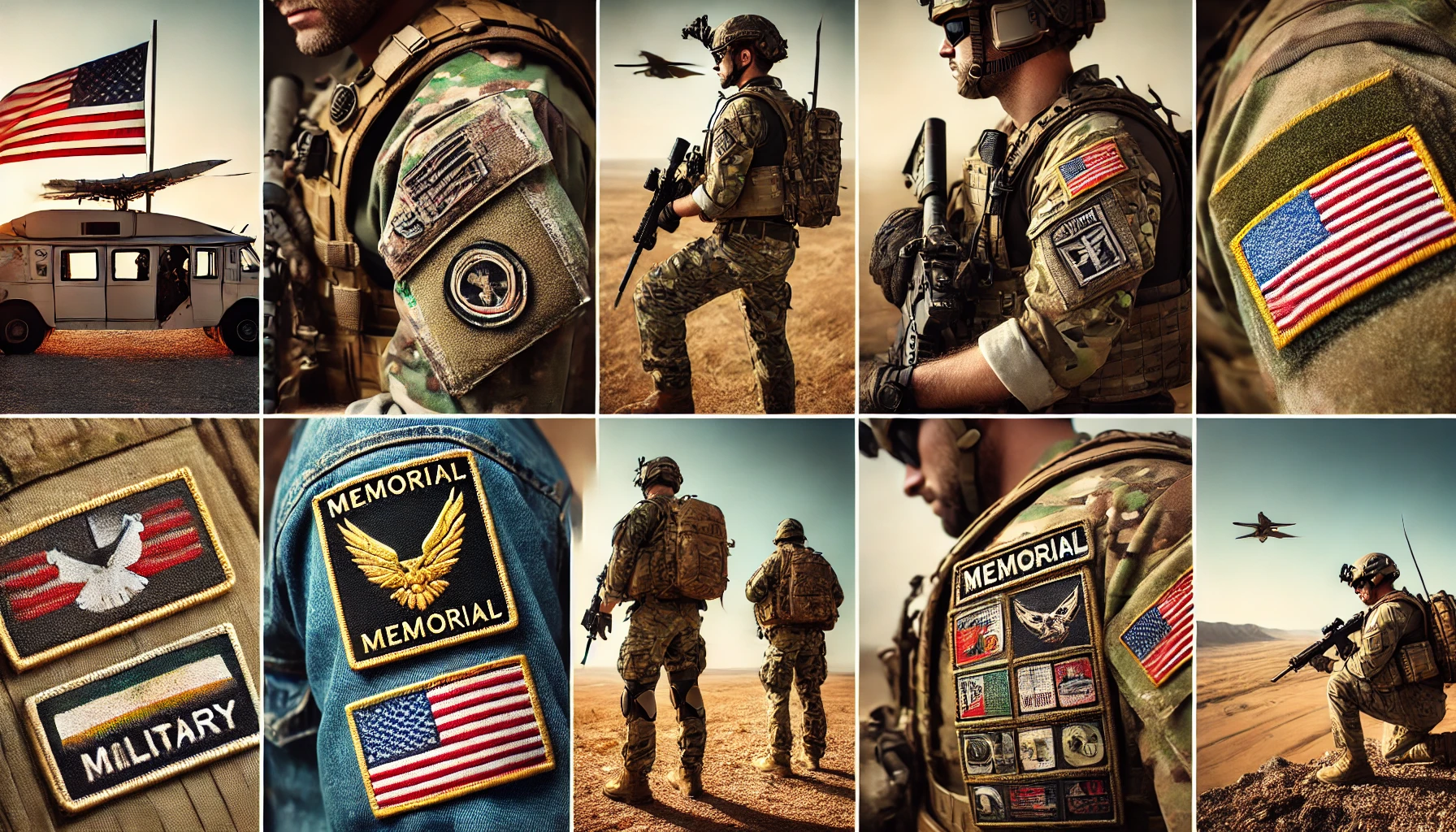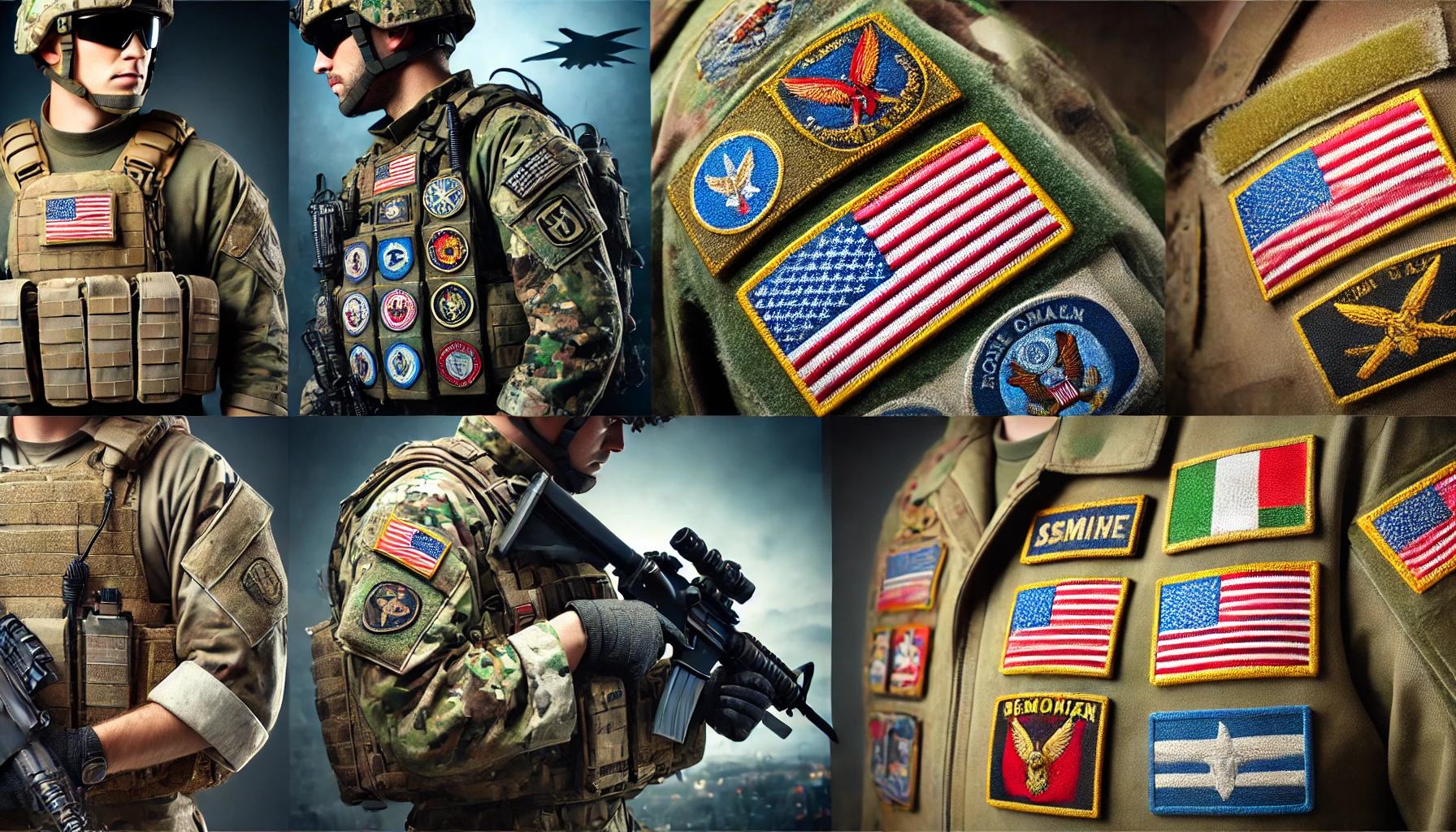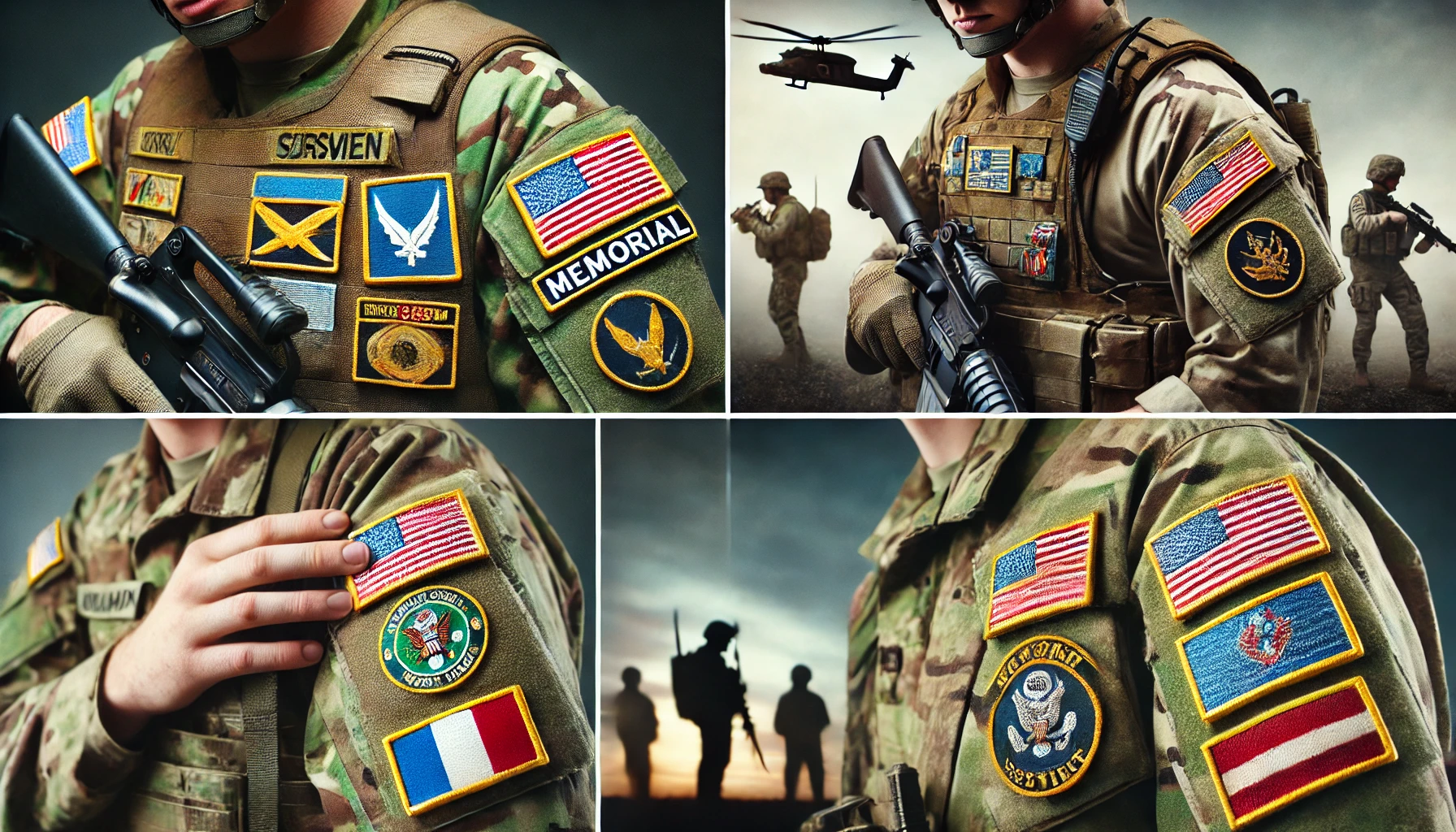Military patches, often seen as simple pieces of cloth sewn onto uniforms, carry deep significance in the military world. They serve not only as symbols of identity, rank, and honor, but also as tangible representations of the service members’ history, unit affiliations, achievements, and sacrifices. The tradition of wearing military patches dates back many centuries, and over time, their role has evolved to encompass much more than mere decoration.
- Symbol of Identity and Belonging
Unit Identification: Military patches often display the emblem of a specific unit, division, or branch of service. They help service members instantly identify each other and forge a sense of unity. Soldiers proudly wear patches to show they are part of a particular team or battalion.
Branch and Division Recognition: Each branch of the armed forces, such as the Army, Navy, Air Force, or Marine Corps, has its unique patches. Similarly, divisions within these branches may have distinct patches that identify their specific mission or location. These patches not only show affiliation but also provide a deeper sense of pride and belonging.
- Historical Significance
Legacy of Tradition: Many military patches feature insignias that date back decades or even centuries. Wearing these patches connects present-day service members with the long and storied history of their units. Some patches commemorate important battles, campaigns, or periods of military history, allowing new generations to carry forward the legacy of those who came before them.
Commemorating Wars and Battles: Some patches are designed to mark significant conflicts or engagements, such as World War II, the Korean War, or more recent operations. These serve as a reminder of the sacrifices made during these conflicts and pay tribute to those who served.
- Recognition of Rank and Achievements
Promotion and Rank Designation: Patches are also used to signify rank, which is vital in maintaining order and chain of command in the military. Whether a service member is an officer, a non-commissioned officer, or an enlisted soldier, their patches quickly convey their level of authority.
Personal Accomplishments: Individual achievements, such as completing specialized training, participating in certain missions, or earning honors like medals, are often represented through patches. These act as visible markers of a soldier’s skill and experience, and they are worn with pride.
- Boosting Morale and Cohesion
Unit Pride: Wearing patches that represent their unit or mission boosts morale among service members. It gives them a sense of belonging and pride, as they wear a visible reminder of their commitment and service.
Shared Identity: When members of a unit share the same patch, it fosters camaraderie and team spirit. It reminds them that they are part of something larger than themselves, creating a sense of responsibility and loyalty to their fellow soldiers.
- Communication of Expertise and Specialty
Specialized Roles: Military patches can indicate the specific role or specialty of a service member. For instance, patches may denote that someone is a medic, engineer, pilot, or sniper. These patches communicate valuable information that is crucial in a military setting, where understanding each other’s roles can make the difference in life-or-death situations.
Special Forces and Elite Units: Members of elite units, such as Navy SEALs, Army Rangers, or Airborne divisions, often have unique patches that set them apart from regular service members. These patches signify their advanced training and the rigorous standards they’ve met.
- Honoring the Fallen
Memorial Patches: In some cases, military patches are worn to honor fallen comrades. These patches, often adorned with symbols or names, are a way for service members to keep the memory of their comrades alive, recognizing the ultimate sacrifice made in service to their country.
Commemorative Campaign Patches: Special patches are sometimes issued to commemorate those who have fallen in specific battles or missions, serving as a solemn reminder of the costs of war.
- International and Coalition Forces Representation
Cross-National Identification: Military patches also play a significant role in international coalitions or joint military exercises. When troops from different countries work together, patches are used to identify nationality, branch, and role within a multinational force. This is important for maintaining clear lines of communication and authority in diverse operational settings.
- Cultural and Symbolic Value
Unique Symbols and Insignia: The designs of military patches are often rich in symbolism, with colors, shapes, and images chosen to convey important messages. For example, certain animals, such as eagles or wolves, are used to symbolize strength, vigilance, or courage, while colors like red and gold may denote bravery and honor.
Regalia and Tradition: The culture surrounding military patches is important in the armed forces. Traditions like “patch exchanges,” where soldiers trade patches with one another as a sign of mutual respect, contribute to building bonds across different units or even between countries.
- Practical Function in Combat Zones
Quick Identification in the Field: In combat situations, patches serve a practical purpose. They allow soldiers to quickly identify friend from foe, as well as recognize ranks and roles within their own forces. In high-stress situations, such as in combat zones, this immediate recognition can be critical to the success of a mission.
Camouflage and Concealment: In modern warfare, military patches can be designed to blend with a soldier’s camouflage gear, ensuring that while they remain functional, they do not compromise the soldier’s safety by making them more visible to the enemy.
- Collectability and Veteran Pride
Military Patch Collecting: For veterans and military enthusiasts, collecting patches is a popular hobby. Patches from various units, campaigns, or time periods are sought after and traded, preserving the stories and history associated with them.
Wearing Patches in Civilian Life: After leaving the service, many veterans wear patches on jackets, hats, or other clothing as a way to continue showcasing their pride in their military service. These patches often serve as conversation starters and allow veterans to maintain a visible connection to their time in the armed forces.
Conclusion
Military patches are far more than decorative pieces of fabric; they are deeply ingrained symbols of identity, tradition, and honor in the military community. From promoting unit cohesion and individual pride to offering historical continuity and practical functionality, patches play a critical role in military life. Whether marking battles won, skills mastered, or sacrifices made, these small but significant symbols carry a profound weight, both for those who serve and for those who remember.



